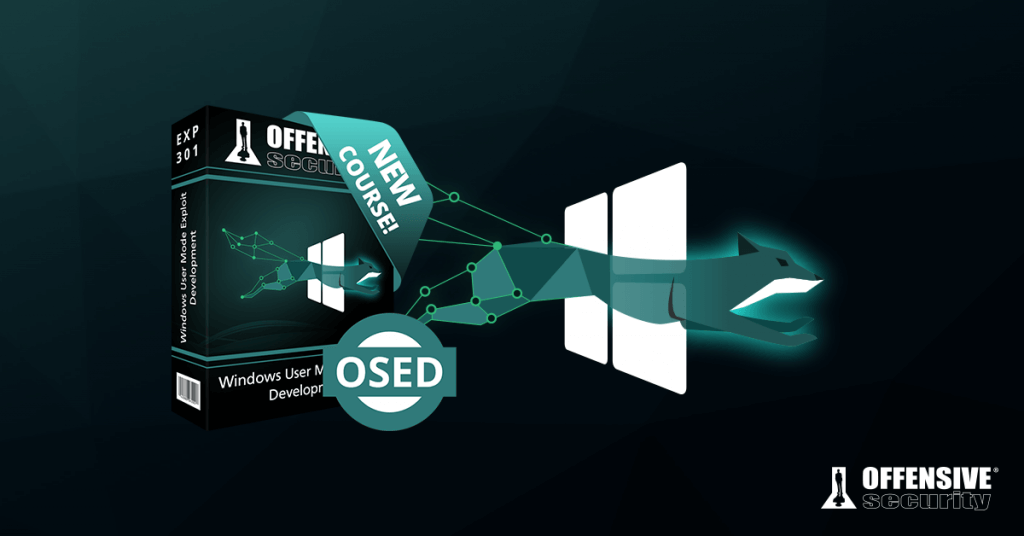· Alex · security · 10 min read
OWASP ASVS: A Comprehensive Guide to Application Security
Basic overview of the Application Security Verification Standard and what it can do for software security

OWASP ASVS
OWASP is a nonprofit organization that’s all about improving the security of software. They’ve got a bunch of resources, guidelines, and tools that help developers create secure applications. Among their many offerings, the ASVS is a standout. The ASVS is a comprehensive set of security requirements that can help you ensure that your applications are rock solid when it comes to security. It’s like a roadmap that guides you on the best practices for securing your software. It’s super useful because it not only tells you what to do, but also explains why you should do it. And the best part? It’s totally customizable, which means you can adapt it to your organization’s specific needs.
Understanding OWASP ASVS
What is OWASP ASVS?
Definition
ASVS stands for Application Security Verification Standard. It’s detailed checklist made by OWASP that lays out the best practices for application security. Think of it as a handy guide that helps you figure out what security measures you should be taking and how to go about implementing them. The ASVS covers everything from the basics, like authentication and access control, to more advanced stuff like cryptography and business logic security.
Purpose and Goals
The main goal of the ASVS is to create a solid foundation for securing your applications. It helps you identify potential security risks, so you can take the necessary steps to protect your apps from those pesky hackers. By following the ASVS, you’re not just ticking boxes to pass a security audit; you’re actually making your software more robust and secure. It’s a proactive approach that can save you a ton of headaches (and money) down the line. Plus, it ensures that you’re keeping up with the ever-changing landscape of cybersecurity, which is always a good thing.
Components of OWASP ASVS
Levels of Verification
Think of the levels of verification as the different stages of your application security journey. There are three levels (Level 1, Level 2, and Level 3), each with its own set of requirements. Level 1 is like the entry point – it’s all about the basic security measures that every app should have in place. Level 2 is a step up – it’s for apps that deal with sensitive data and need a more robust security framework. Finally, Level 3 is the big leagues – it’s for those high-risk apps that need top-notch security to protect critical data and systems. The cool thing about these levels is that they let you customize the ASVS to fit your organization’s needs.
Categories of Requirements
The ASVS is divided into several categories, each focusing on a different aspect of application security. These categories cover everything from design and architecture to input validation and error handling. By breaking things down into categories, the ASVS makes it super easy for you to find the specific requirements you need to focus on.
Application Security Requirements
Last but definitely not least, we’ve got the application security requirements themselves. These are the actual guidelines and best practices that the ASVS lays out for each category. They’re like the building blocks of your app’s security mechanisms – by following them, you can create a strong and resilient application. The requirements are super detailed and provide clear, actionable steps you can take to improve your app’s security. And the best part? They’re constantly updated to keep up with the latest cybersecurity trends and threats, so you know you’re always getting the most up-to-date advice.
Benefits of using OWASP ASVS
Improved Security Posture
The ASVS covers a wide range of security topics, so you can be confident that you’re not leaving any stones unturned. Plus, since it’s always being updated, you know you’re keeping up with the latest threats and trends.
Standardization of Security Practices
Another great benefit of the ASVS is that it helps you standardize your security practices across your organization. This means that no matter who’s working on a project or which app they’re building, they’ll be following the same set of rules and guidelines. This consistency makes it way easier to manage your app security and ensures that everyone’s on the same page. Plus, it helps create a culture of security within your organization, which is always a good thing.
Streamlined Security Audits
Finally, the ASVS can make your life a whole lot easier when it comes to security audits. Since you’re already following a well-known and respected framework, it’s way simpler to demonstrate your compliance with security standards. Auditors are more likely to be familiar with the ASVS, so they’ll have an easier time understanding your security efforts. Plus, since the ASVS is so comprehensive, it can help you identify and fix potential security issues before they become big problems during an audit.
Key Categories of OWASP ASVS
Architecture, Design, and Threat Modeling
This category is all about planning your app’s security from the ground up. It involves designing secure architecture, identifying potential threats, and figuring out how to protect your app from those threats.
Authentication
Authentication is all about making sure that the people using your app are who they say they are. This category covers everything from usernames and passwords to multi-factor authentication and single sign-on.
Session Management
Once your users are authenticated, you need to manage their sessions securely. This category helps you do just that, by providing guidelines for things like session cookies, timeouts, and session ID generation.
Access Control
Access control is all about making sure your users can only access the parts of your app that they’re supposed to. This category covers topics like role-based access control, least privilege, and access control lists.
Input Validation and Output Encoding
This category is all about making sure that the data entering and leaving your app is safe and secure. It covers input validation (checking that the data is in the right format and free from malicious content) and output encoding (preventing attacks like cross-site scripting).
Cryptography
Cryptography is the art of encoding and decoding data, and it’s crucial for keeping your app’s sensitive information safe. This category covers topics like encryption, key management, and hashing.
Error Handling and Logging
Errors happen, but it’s important to handle them securely and log them properly. This category provides guidelines for secure error handling (preventing information leakage) and logging (recording events for later analysis).
Data Protection
Data protection is all about keeping your app’s sensitive data safe, both when it’s stored and when it’s being transmitted. This category covers things like secure data storage, data classification, and secure data transmission.
Communication Security
Communication security is all about making sure that the data transmitted between your app and other systems is protected. This category covers topics like SSL/TLS, secure API design, and secure email transmission.
System Configuration
A secure app starts with a secure system. This category provides guidelines for configuring your app’s underlying systems securely, from the operating system to the web server.
Database Security
Your app’s data is often stored in a database, so it’s crucial to keep that database secure. This category covers topics like secure database configuration, SQL injection prevention, and data access controls.
File Management
File management involves securely handling the files your app uses and generates. This category covers topics like secure file upload, download, and storage, as well as proper access controls and file permissions.
Memory Management
Memory management is all about ensuring that your app uses memory securely and efficiently. This category covers topics like buffer overflow prevention, memory allocation, and secure coding practices.
Denial of Service Protection
Denial of service (DoS) attacks can bring your app to its knees, so it’s important to protect against them. This category provides guidelines for preventing and mitigating DoS attacks, like rate limiting and traffic monitoring.
Business Logic Security
Business logic security is all about making sure that your app’s unique functionality is secure. This category covers topics like secure design patterns, data integrity, and fraud prevention.
Mobile Security
If your app is designed for mobile devices, you’ll need to consider mobile-specific security concerns. This category covers topics like secure app distribution, mobile app permissions, and secure data storage on mobile devices.
Web Services Security
Web services (like APIs) are an important part of many apps, and they need to be secure too. This category covers topics like secure API design, authentication for web services, and data protection.
Miscellaneous
This category is the catch-all for any other security topics that don’t fit neatly into the other categories. It covers things like secure coding practices, third-party component security, and virtualization security.
Implementing OWASP ASVS in Your Organization
Assessing the Current State of Application Security
Before you can dive into implementing the ASVS, you need to take a good, hard look at your current application security situation. This involves identifying any gaps, weaknesses, or areas for improvement in your existing security practices. You can use some like OWASP Software Assurance Maturity Model (SAMM) to measure this.
Choosing the Appropriate ASVS Level for Your Organization
Remember those three levels of verification we talked about earlier? Now’s the time to choose the one that’s right for your organization. This will depend on factors like your app’s risk profile, the sensitivity of your data, and your organization’s security objectives.
Integrating ASVS into the Software Development Lifecycle (SDLC)
Once you’ve chosen the right ASVS level for your organization, it’s time to weave it into your software development lifecycle. This means incorporating ASVS requirements into your design, development, testing, and deployment processes.
Training and Awareness for Developers and Stakeholders
Implementing the ASVS isn’t just about updating processes – it’s also about getting your team on board. This means providing training and raising awareness about the ASVS for both developers and stakeholders. By helping everyone understand the importance of application security and their role in it, you’ll create a culture of security that will make your app even stronger.
Continuous Improvement and Monitoring
Finally, it’s crucial to remember that implementing the ASVS isn’t a one-time deal – it’s an ongoing process. This means continuously monitoring your app’s security, updating your ASVS implementation as needed, and learning from any incidents that do occur. It’s like a never-ending quest to make your app as secure as possible.
Additional OWASP Resources
Now that we’ve covered the OWASP ASVS and how to implement it in your organization, let’s talk about some other awesome resources that OWASP has to offer. These resources can help you dig even deeper into the world of application security and level up your skills even more.
OWASP Top Ten Project
The OWASP Top Ten Project is a super handy resource that highlights the most critical security risks for web applications. By familiarizing yourself with these top risks, you can make sure you’re focusing your security efforts where they’ll have the most impact.
OWASP Testing Guide
Looking to get serious about testing your app’s security? The OWASP Testing Guide has got you covered. This comprehensive guide provides a complete methodology for testing the security of your web applications, including tips, techniques, and best practices. It’s like a roadmap that’ll guide you through the process of securing your app, one test at a time.
OWASP Cheat Sheets
Need some quick tips and tricks for securing your app? Look no further than the OWASP Cheat Sheets. These handy resources offer bite-sized guidance on a wide range of application security topics, from authentication and access control to input validation and error handling. They’re like the CliffsNotes of app security, giving you the info you need in a quick and easy-to-digest format. So there you have it – some additional OWASP resources to help you up your app security game.
Conclusion
Throughout our journey, we’ve seen how the OWASP ASVS can play a vital role in building secure applications. This comprehensive framework provides the guidelines, best practices, and resources you need to tackle application security head-on. By implementing the ASVS in your organization, you’ll be well-equipped to face the challenges of the modern digital landscape and keep your apps safe from harm. So, as we say goodbye, I encourage you to take the plunge and adopt the OWASP ASVS in your organization.
About the Author:
Application Security Engineer and Red-Teamer. Over 15 years of experience in Application Security, Software Engineering and Offensive Security. OSCE3 & OSCP Certified. CTF nerd.



